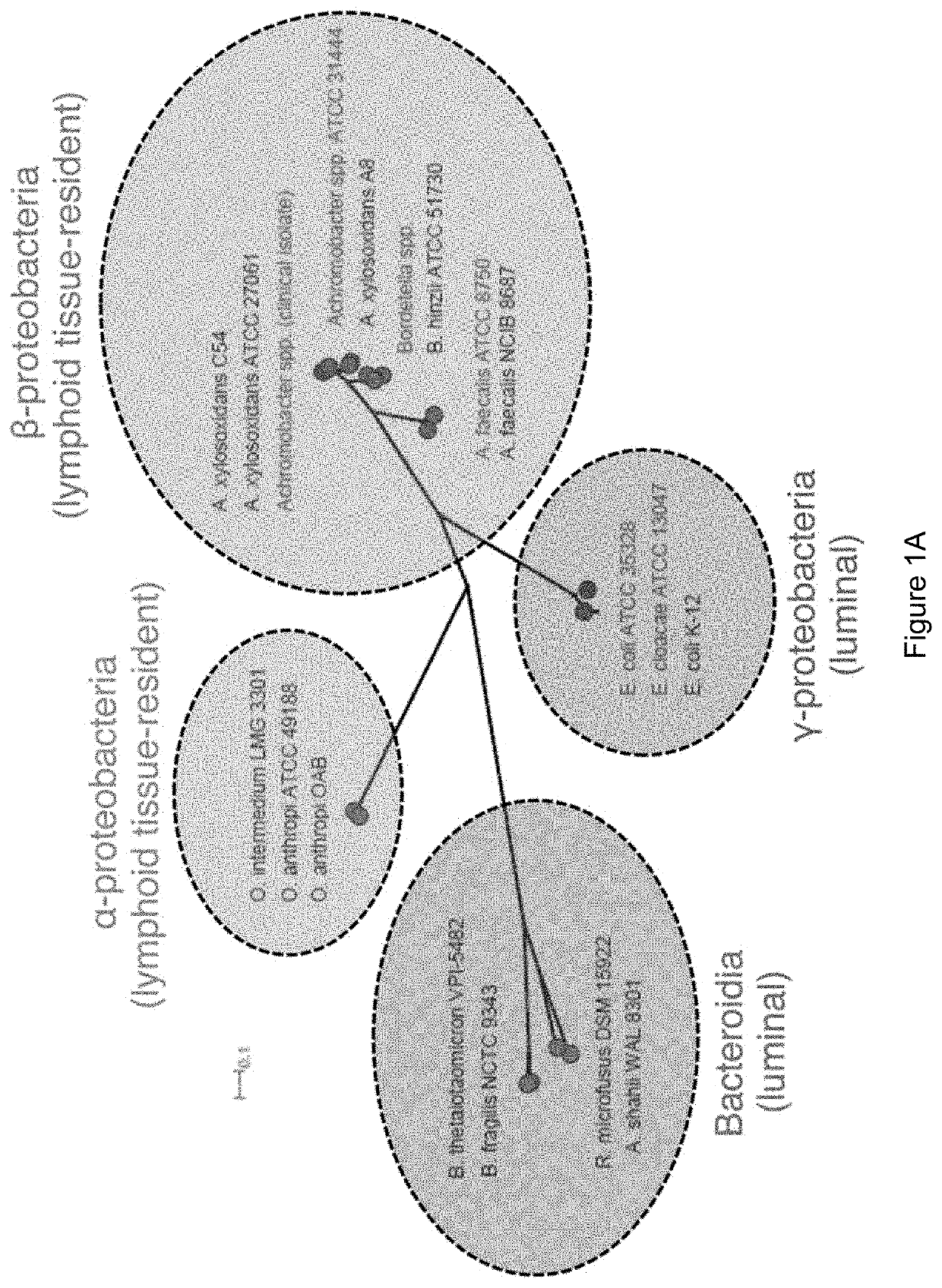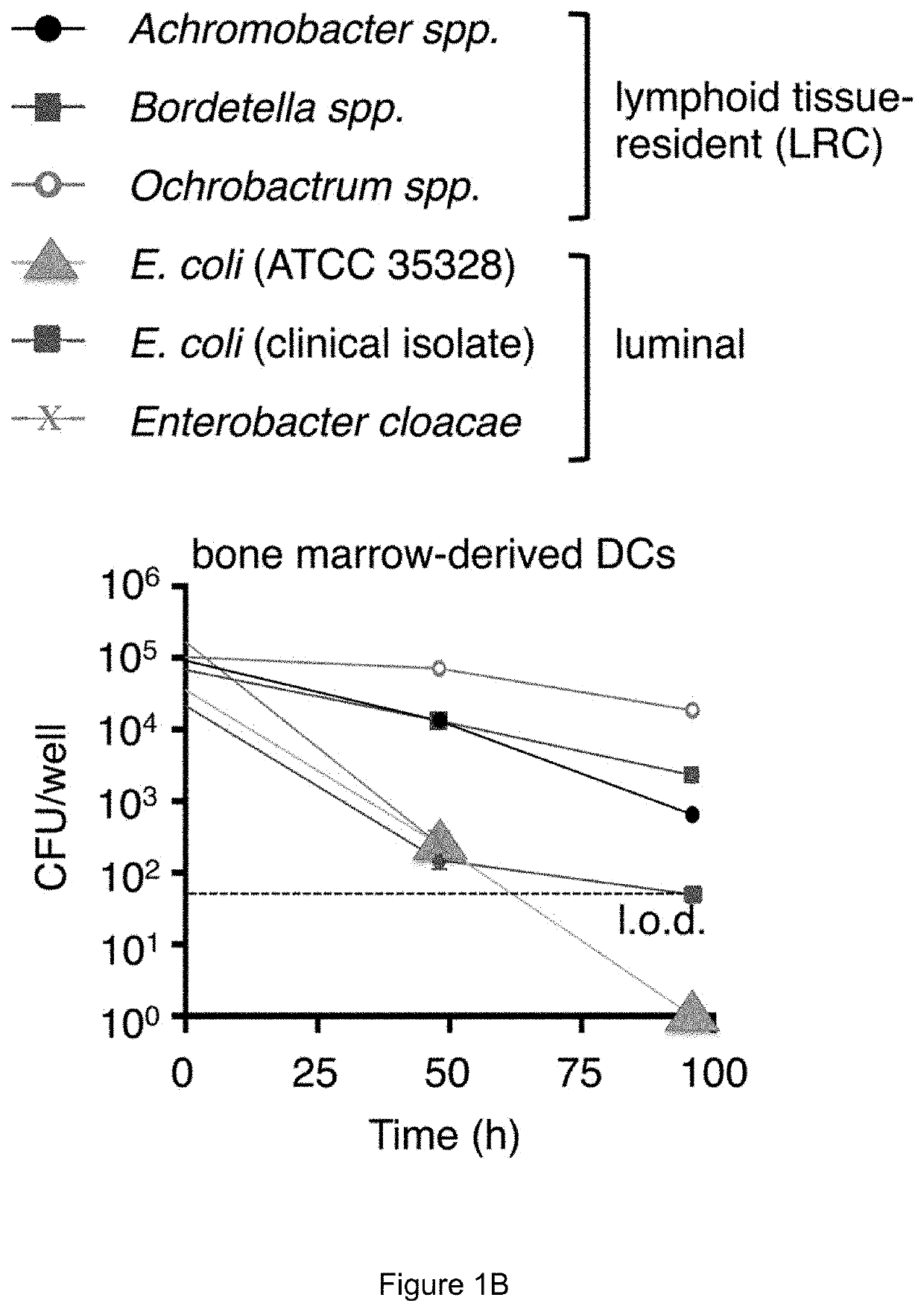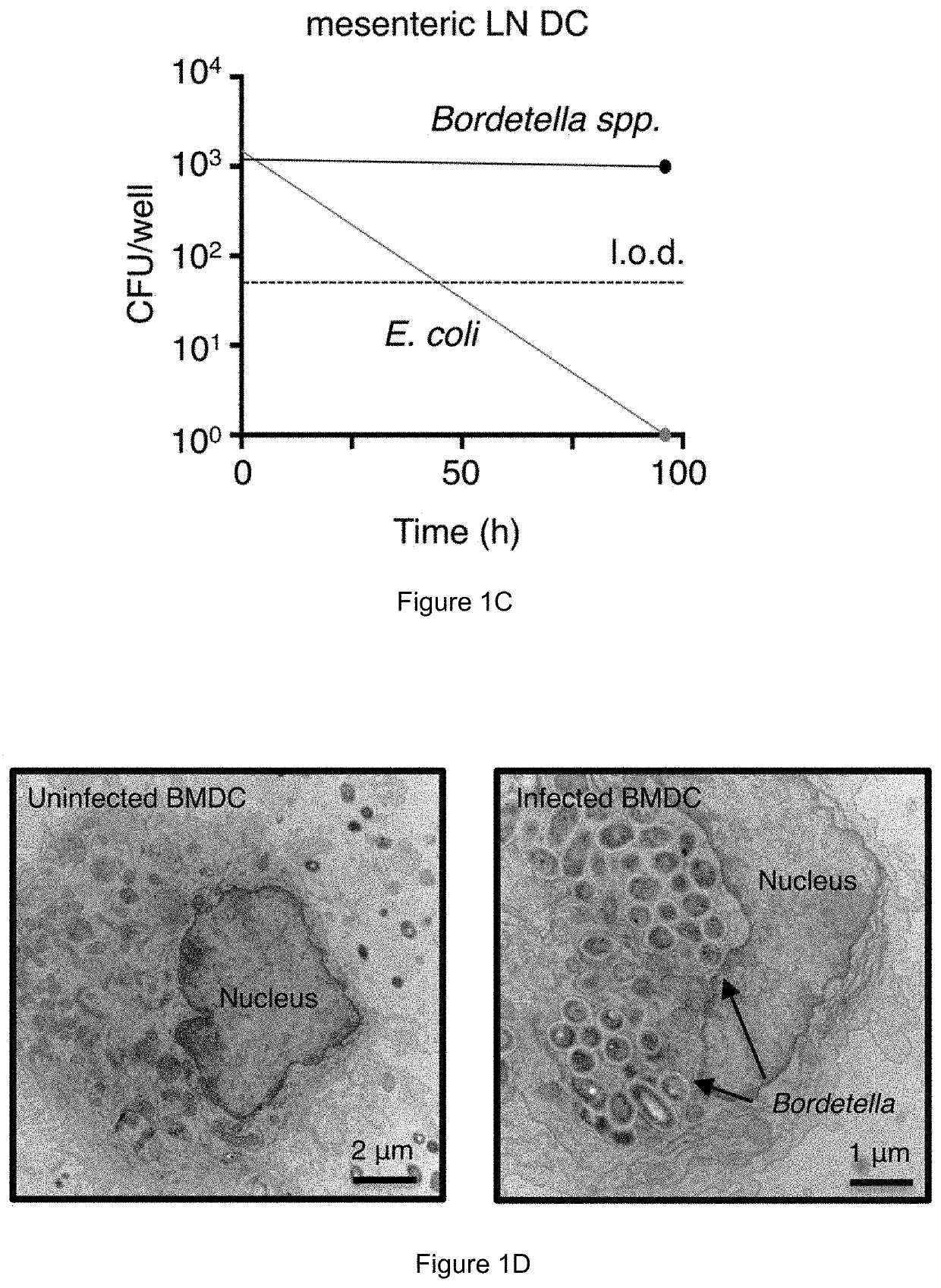Probiotic compositions and methods of use
a technology of compositions and probiotics, applied in the field of probiotic compositions, can solve the problems of undefined functional significance of this colonization to the host, and achieve the effects of limiting chronic inflammation, modulating cytokine production, and limiting the development of pro-inflammatory th17 cell responses
- Summary
- Abstract
- Description
- Claims
- Application Information
AI Technical Summary
Benefits of technology
Problems solved by technology
Method used
Image
Examples
example 1
[0124]The present description is further illustrated by the following examples, which should not be construed as limiting in any way. The contents of all cited references (including literature references, issued patents, published patent applications as cited throughout this application) are hereby expressly incorporated by reference.
[0125]Experimental Procedures
[0126]Mice
[0127]C57BL / 6 and Rag1− / − mice were purchased from Jackson Laboratories and used at 6-12 weeks of age. Conventional mice used as controls in gnotobiotic mice experiments were purchased from Jackson Laboratories and co-housed with mice bred in our conventional animal facility for at least 7 days before use. C57BL / 6 and Rag1− / − mice used as controls for knockout mice were either bred in the same animal facility as the knockout mice, purchased from Jackson Laboratories and co-housed with mice bred in our SPF animal facility for at least 7 days or littermates as indicated to normalize for microbiota differences. All co...
example 2
[0174]This example demonstrates that administration of LRC bacteria improves colonization and diversity when used in conjunction with FMT. On day 0, mice were administered broad-spectrum antibiotics ampicillin and neomycin for three days to deplete the endogenous microbiota. Mice were then gavaged with PBS, LRC strain CF220, or E. coli. On day 17 mice were removed from antibiotics. On days 18 and 21, all mice received a fecal microbiota transplant (FMT) from C57BL / 6 mice. On day 31, mice were administered DSS.
[0175]16S sequencing on mice from each experimental condition after FMT and those that were administered an LRC strain exhibit substantially more bacterial diversity as compared to those mice that were administered E. coli or PBS (FIG. 13). Analysis of the 16S data also shows substantially higher alpha-diversity in those mice receiving a LRC strain prior to FMT (FIG. 14). Weight loss and overall survival was substantially improved in DSS administered mice that received a LCR st...
example 3
[0176]This example demonstrates the importance of hepcidin in LRCs colonization of dendritic cells. Bone marrow dendritic cells (BMDCs) were generated from wild-type mice (WT) or hepcidin-deficient mice (Hepcidin− / −) and then were exposed to E. coli or a model LRC (Bordetella). Colony forming units per well were measured and are shown in FIG. 16 for the indicated groups. These results demonstrate that hepcidin is important for colonization of dendritic cells selectively with LRCs.
PUM
| Property | Measurement | Unit |
|---|---|---|
| diameter | aaaaa | aaaaa |
| diameter | aaaaa | aaaaa |
| diameter | aaaaa | aaaaa |
Abstract
Description
Claims
Application Information
 Login to View More
Login to View More - R&D
- Intellectual Property
- Life Sciences
- Materials
- Tech Scout
- Unparalleled Data Quality
- Higher Quality Content
- 60% Fewer Hallucinations
Browse by: Latest US Patents, China's latest patents, Technical Efficacy Thesaurus, Application Domain, Technology Topic, Popular Technical Reports.
© 2025 PatSnap. All rights reserved.Legal|Privacy policy|Modern Slavery Act Transparency Statement|Sitemap|About US| Contact US: help@patsnap.com



